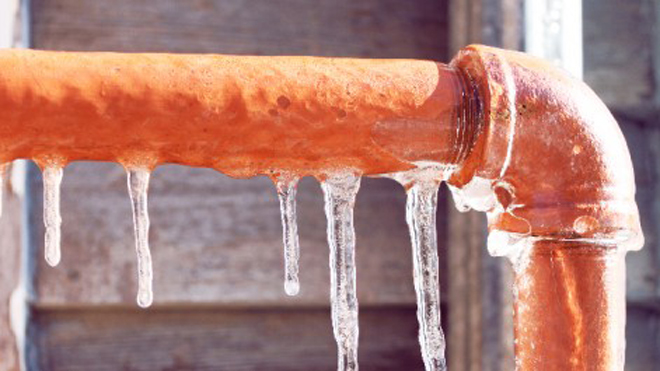Essential Strategies for Preventing Frozen Pipes in Cold Weather
Essential Strategies for Preventing Frozen Pipes in Cold Weather
Blog Article
Every person maintains their own piece of advice about How To Avoid Freezing Pipes.

Winter can damage your plumbing, specifically by freezing pipes. Below's exactly how to prevent it from taking place and what to do if it does.
Intro
As temperatures drop, the danger of frozen pipes rises, potentially bring about expensive fixings and water damage. Understanding exactly how to prevent frozen pipelines is crucial for house owners in cool climates.
Comprehending Icy Pipelines
What causes pipes to freeze?
Pipelines ice up when revealed to temperatures below 32 ° F (0 ° C) for extended periods. As water inside the pipes freezes, it expands, putting pressure on the pipe wall surfaces and potentially triggering them to break.
Risks and damages
Icy pipes can result in water disruptions, building damage, and expensive repair services. Ruptured pipelines can flooding homes and cause comprehensive structural damages.
Indications of Frozen Piping
Recognizing frozen pipelines early can stop them from breaking.
Just how to recognize icy pipelines
Seek lowered water circulation from taps, unusual odors or sounds from pipelines, and visible frost on revealed pipelines.
Prevention Tips
Shielding vulnerable pipelines
Cover pipelines in insulation sleeves or use heat tape to secure them from freezing temperature levels. Focus on pipes in unheated or exterior areas of the home.
Heating techniques
Keep indoor spaces properly warmed, particularly locations with pipes. Open cabinet doors to allow warm air to distribute around pipelines under sinks.
Securing Exterior Plumbing
Yard hose pipes and exterior faucets
Detach and drain garden tubes before winter months. Install frost-proof spigots or cover outside taps with insulated caps.
What to Do If Your Pipes Freeze
Immediate activities to take
If you suspect frozen pipelines, maintain taps open to eliminate stress as the ice melts. Make use of a hairdryer or towels soaked in hot water to thaw pipes gradually.
Long-Term Solutions
Architectural changes
Consider rerouting pipes away from exterior walls or unheated areas. Add additional insulation to attic rooms, cellars, and crawl spaces.
Updating insulation
Purchase high-grade insulation for pipelines, attic rooms, and wall surfaces. Appropriate insulation assists preserve constant temperatures and decreases the risk of icy pipelines.
Final thought
Stopping frozen pipes requires aggressive procedures and quick reactions. By understanding the reasons, indications, and safety nets, property owners can secure their pipes during winter.
5 Ways to Prevent Frozen Pipes
Drain Outdoor Faucets and Disconnect Hoses
First, close the shut-off valve that controls the flow of water in the pipe to your outdoor faucet. Then, head outside to disconnect and drain your hose and open the outdoor faucet to allow the water to completely drain out of the line. Turn off the faucet when done. Finally, head back to the shut-off valve and drain the remaining water inside the pipe into a bucket or container. Additionally, if you have a home irrigation system, you should consider hiring an expert to clear the system of water each year.
Insulate Pipes
One of the best and most cost-effective methods for preventing frozen water pipes is to wrap your pipes with insulation. This is especially important for areas in your home that aren’t exposed to heat, such as an attic. We suggest using foam sleeves, which can typically be found at your local hardware store.
Keep Heat Running at 65
Your pipes are located inside your walls, and the temperature there is much colder than the rest of the house. To prevent your pipes from freezing, The Insurance Information Institute suggests that you keep your home heated to at least 65 degrees, even when traveling. You may want to invest in smart devices that can keep an eye on the temperature in your home while you’re away.
Leave Water Dripping
Moving water — even a small trickle — can prevent ice from forming inside your pipes. When freezing temps are imminent, start a drip of water from all faucets that serve exposed pipes. Leaving a few faucets running will also help relieve pressure inside the pipes and help prevent a rupture if the water inside freezes.
Open Cupboard Doors
Warm your kitchen and bathroom pipes by opening cupboards and vanities. You should also leave your interior doors ajar to help warm air circulate evenly throughout your home.

We were shown that report on How to Prevent Your Pipes From Freezing from an associate on our other domain. Liked our posting? Please share it. Let others find it. We cherish reading our article about Helpful Tips to Prevent Frozen Pipes this Winter.
Booking Report this page